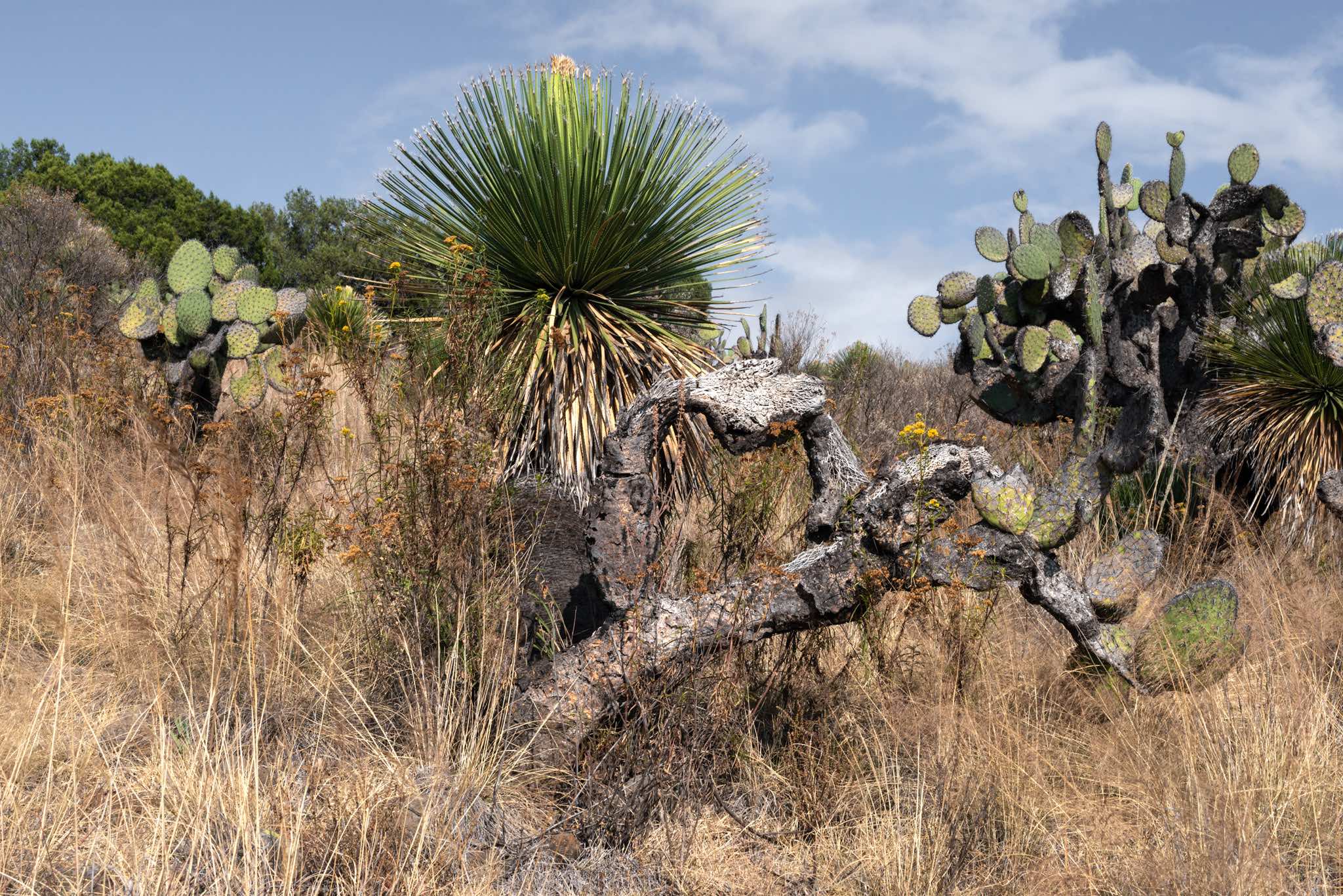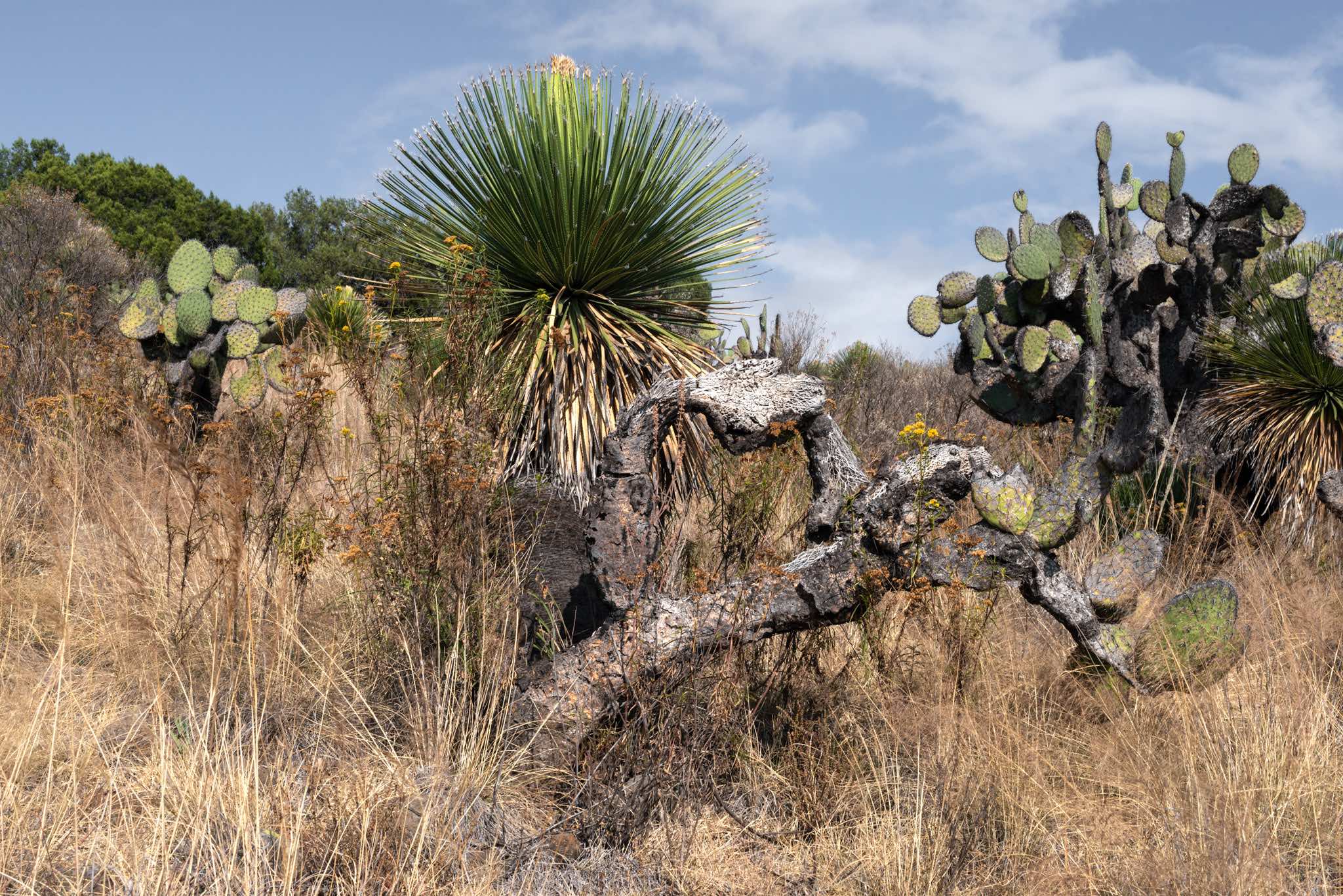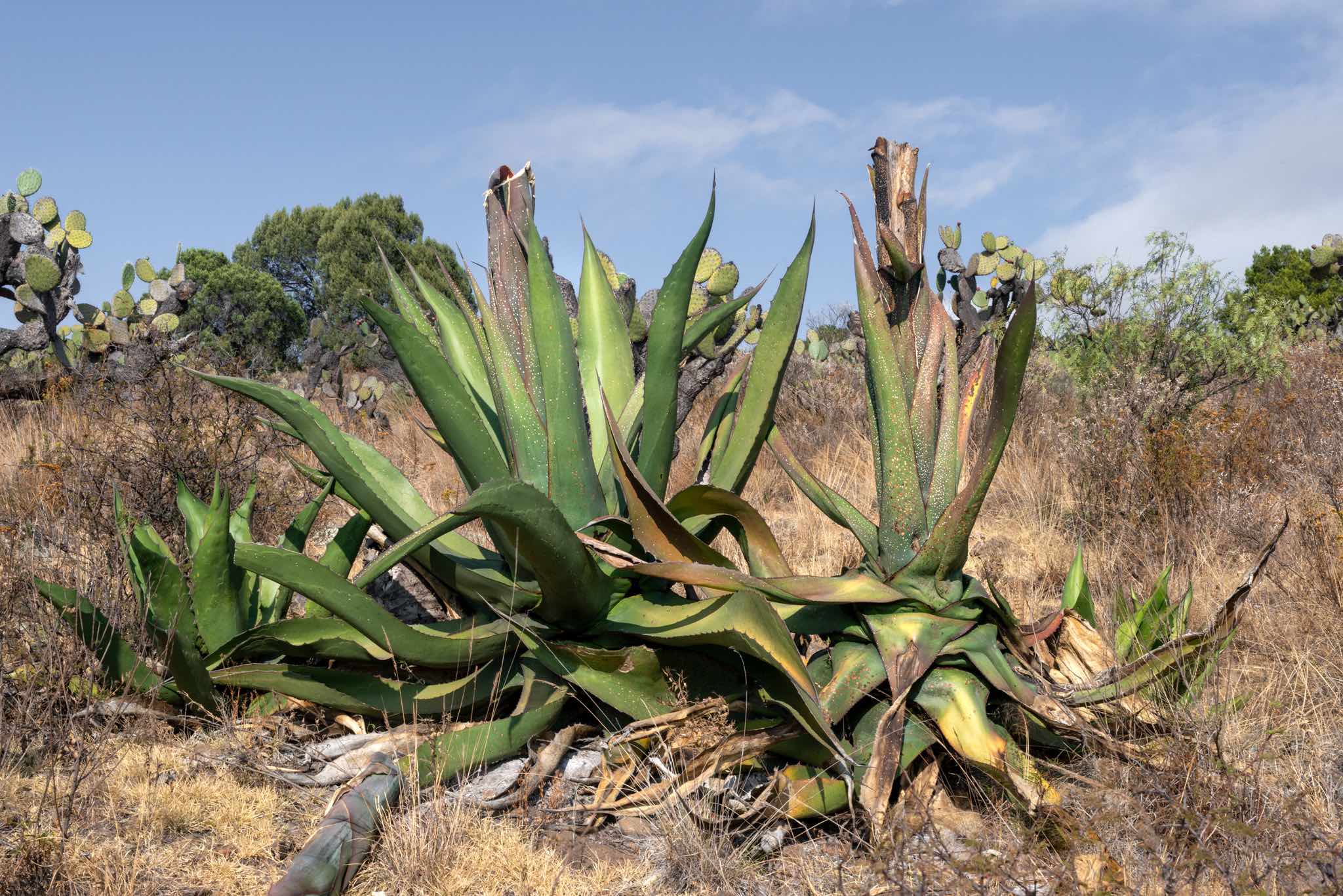The most abundant ecosystem in Mexico: xerophilous scrub



Xerophilous scrub (from Greek xero-: dry, phytos-: plant, -phylum: friend) is an ecosystem made up of scrub (plant communities dominated by shrubs less than 4 m tall) in areas with scarce rainfall (less than 700 mm). They live in arid climates from coastal plains to high areas with average temperatures of 12 to 26° C.
In these thickets there is a wide variety of species including legumes, cacti, agaves, euphorbiaceae and grasses (CONABIO, 2021). In terms of fauna, there is a wide variety of mammals, birds and reptiles, including coyotes, black-tailed hares, pumas, raccoons, bighorn sheep, macaws, horned owls, Mexican falcons, falcons, palomeros, golden eagles, rattlesnakes, snakes and even turtles.

Xerophilous vegetation is adapted for life in dry environments. That's why this type of vegetation generally has specific characteristics that allow them to survive in such environments, such as: long and extensive roots that form surface networks or that can reach groundwater or underground humidity; you have thick trunks that can store water; they are deciduous, that is, they release their leaves in long periods of drought; they have leaves with stomata, leaves reduced to thorns or simply the absence of leaves; and finally, they have photosynthetic metabolism specially adapted to saving water (acid metabolism of crasulaceae). For these reasons, the vegetation of the xerophilous scrub is hawthorn, occurring in squat shrubs, deciduous trees, pastures and geophytic plants.
These characteristics make this type of vegetation make the most of water when they have access to it. In rainy seasons it is common to observe color changes in vegetation and there are even species that bloom and bear fruit.
In Mexico, xerophilous scrub is the most abundant ecosystem, occupying around 28% of the country's surface, which represents more than 56 million hectares (INEGI, 2015). They live mainly in the north, from Tamaulipas, Nuevo León, Coahuila, Chihuahua, Durango, Zacatecas, and to parts of San Luis Potosí, Durango, Guanajuato, Oaxaca and Puebla. (CONABIO, 2021)
Compared to the other ecosystems present in the national territory, xerophilous scrub has a high number of endemic species (species naturally limited to a specific geographical region) (CONAFOR, 2019). In addition, given its abundance in Mexican territory, more than 58% of the national population lives within this ecosystem (as of 2010); this represents 65.4 million people (CONAFOR, 2019).

Unfortunately, uncontrolled grazing together with the excessive exploitation of their species has caused great loss of vegetation as well as the considerable reduction of animal species. In addition, these uncontrolled activities have caused soil compaction and erosion, which is extremely difficult to reverse.
This makes the conservation of this ecosystem and its sustainable exploitation crucial for the conservation of biodiversity and for maintaining the varied ecosystem services it provides. On the other hand, this ecosystem is of high social and economic value because it produces many products that can be consumed and marketed. The species from which materials and products are most commonly extracted are listed below (CONAFOR, 2019):
Mezquite. From this tree, flour is obtained that is used in various foods, its flower is commonly used by bees which results in a soft and clear honey, and with its wood it is possible to make furniture and high quality charcoal.
Cortadillo. From it you can obtain resistant fibers used in brooms (Mexican brooms are recognized worldwide for their quality and are one of the most exported products), brushes and other products.
Sotol. An evergreen plant from which alcoholic beverages commonly consumed in the north of the country can be produced.
Candelilla. Exclusive to the American continent, it is a unique plant that produces high quality wax used as a natural preservative for fruits and vegetables, in addition to having other uses in the automotive, pharmaceutical, industrial, mechanical, aeronautical and many other industries.
Yucca filifera. A plant that can grow up to 20 meters. Its flower is eaten as food in the north of the country. In addition, it serves as fodder for cattle, oil can be produced from its seed and fibers are extracted from it to make paper.
Oregano. An important species in Mexican and world cuisine. Ointments, emulsions, soaps, creams and masks are also produced from it.
Damiana. An aromatic plant from which tea is made. Used to a lesser extent as an ingredient for energy drinks and from which liquor can be produced. Its striking yellow flower is also frequented by bees and other pollinating insects.
Chile piquín. A unique chili because it has not been industrially domesticated; almost 100% of it is collected from the wild.
Lechuguilla. Belonging to the agave family, it produces a resistant fiber also used in brushes and brooms.
Pitaya. It produces a striking red fruit in a short annual season from which delicious cookies, jams and desserts can be made.
Despite the fact that the species that grow in this ecosystem have a high ecological, social and economic value, This ecosystem is one of the least valued and most sensitive to climate change and forest fires. That is why the Government of Mexico, through CONAFOR, has developed programs so that rural and indigenous communities can strengthen their social fabrics and their economic security by promoting the sustainable exploitation of this ecosystem. It's important that we recognize the value of this ecosystem. Its existence provides us with great natural diversity, a multitude of products, and a unique scenic richness in the world.
References
CONABIO. (2021, July 8). Thickets. Accessed 18/08/2021, from: https://www.biodiversidad.gob.mx/ecosistemas/Matorral
National Forestry Commission (2019, September 19). After the storm, the leaves arrive (Part One). Government of Mexico. Consulted 18/08/2021, from: https://www.gob.mx/conafor/es/articulos/despues-de-la-tormenta-llegan-las-hojas-primera-parte?idiom=es
National Forestry Commission (2019, September 23). After the storm, the leaves arrive (Part 2). Government of Mexico. Consulted 18/08/2021, from: https://www.gob.mx/conafor/es/articulos/despues-de-la-tormenta-llegan-las-hojas-segunda-parte?idiom=es
Explore reflections, research and field learning from our work in ecosystem restoration.